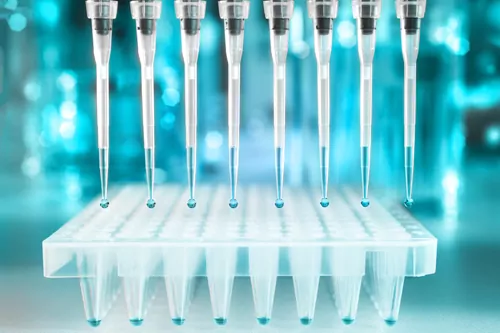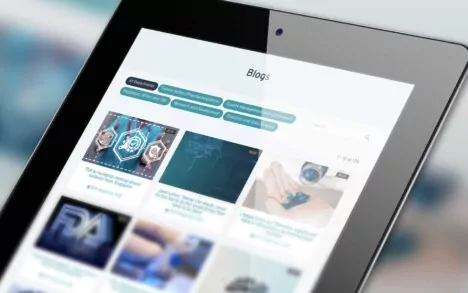In the 20 years since the EU established a legal framework for approving biosimilars, the industry has come a long way[1]. According to a McKinsey & Company report, the biosimilars industry is expected to be valued at $74 billion by 2030[2].
From limited adoption and lower-than-expected savings in the early days to a rich biosimilars environment today – the advances in 20 years have been significant. Biosimilars have been shown to dramatically advance patient access to life-saving medicines, with biosimilar therapies increasing patient treatment days in the EU from 750 million in 2021 to 850 million in 2022[3]. As of mid-2023, the European Medicines Agency had approved 93 biosimilars[4], while by March 2024 the US Food and Drug Administration had approved 49 biosimilars[5].
While biosimilars continue to receive marketing authorization, which has the potential to increase access to biologic therapies and reduce healthcare costs, barriers remain. In a recent panel discussion with leaders in the industry, one issue that was raised was the long and expensive development process, which will require industry–regulator collaborations and a focus on updating and aligning of guidance.
Leah Christl, Ph.D., Global Biosimilars Regulatory Affairs and Regulatory and R&D Policy, Amgen, said progress will depend on regulators maintaining their authority and on the scientific flexibility to apply the best science.
“We must continue to have conversations about the science and the regulatory pathways — among manufacturers and with regulators. We have to make sure our pathways remain open in the future,” she said.
Differences in what EMA and FDA require could potentially affect the decisions companies make about certain programs, according to Elena Wolff-Holz, MD, Global Head Clinical Development, Biocon Biologics.
“Where is the progress? And what can we do about it? How can we collaborate to improve the situation?” she asked during the panel discussion.
Changing regulatory environment
Early regulatory guidance has since proven to be impractical and not useful for development.
Martin Schiestl, Ph.D., Global Head of Regulatory Affairs Policy of Sandoz Biopharmaceuticals, told the panel that the biosimilar pathway was set up in a very conservative manner, and that influenced how people gathered scientific criteria for biosimilars.
“It was really tough in the early days to ensure a comparable on the analytical level,” he said. “That delayed the maturation of the regulatory requirements. Today, what is needed is to show “that a biosimilar is a true biosimilar. Currently, we have a lot of additional requirements still as a heritage of some of those guidelines.”
Dr. Christl, who worked at the FDA before joining industry, said that for years the agency had no product-specific guidance, which, in part, allowed the space to remain as flexible as possible. Now in industry, she said it’s important to start with comparative analytics. “That’s the only way you’re going to fit into development timelines. It’s a race to the finish. It’s important to be in that first wave from a commercial standpoint, so how do you balance that with development and getting the information you need? I think we know a lot more about analytics. The science continues to move ahead.”
The regulators, Dr. Christl said, should look at the development side of innovative assets for originator products to understand the critical quality attributes, ranges and other aspects. That can help influence biosimilars science.
Competitive challenges
One barrier is how to address complexities surrounding efficiency, cost and manageability — especially for the next generation of products. Dr. Wolff-Holz said one way could be to have more noninferiority trials.
“Asymmetric margins that are already partially covered in the guidelines or maybe taking it a step further to focus on powering for a PK trial for multidose patients, also capturing efficacy, safety and immunogenicity data in patients,” she said.
Another step could be to publish results achieved in biosimilars in the market to foster confidence, Dr. Wolff-Holz said.
Educating stakeholders, particularly physicians, is another important step, Dr. Christl said. “As we look at these data packages, regulators, manufacturers, patient advocacy organizations, therapeutic organizations, all of them have to work together and really dig into the education,” she said.
Misinformation about biosimilars remains a concern, Dr. Schiestl noted. “Educational activities are needed to explain the robustness of the regulatory pathway,” he said.
While there are challenges to overcome, new learnings will lead to more innovation in biosimilar development approaches and expansion into new therapeutic categories. This in turn will give patients access to a broader range of comparable treatments at a lower cost – benefiting both the patient and the healthcare system.
Download the Science Huddle white paper to gain more insights from the panel of biosimilars experts.
About the author:
Dr. Christian K Schneider is Head of Biopharma Excellence and Chief Medical Officer for Strategic Product Development Consulting at Cencora PharmaLex. He has broad global regulatory authority experience, having served as chair of the European Medicines Agency’s (EMA’s) Biosimilar Medicinal Products Working Party for nine years. He also was a key architect of the agency’s advanced therapies and biosimilars framework.
[1] Biosimilar medicines: Overview, EMA. https://www.ema.europa.eu/en/human-regulatory-overview/biosimilar-medicines-overview
[2]Three imperatives for R&D in biosimilars, McKinsey & Company, 2022. https://www.mckinsey.com/industries/life-sciences/our-insights/three-imperatives-for-r-and-d-in-biosimilars
[3] The Impact of Biosimilar Competition in Europe. IQVIA. https://www.iqvia.com/-/media/iqvia/pdfs/library/white-papers/the-impact-of-biosimilar-competition-in-europe-2022.pdf
[4] Biosimilars approved in Europe, Generics and Biosimilars Initiative, May 2023. https://www.gabionline.net/biosimilars/general/biosimilars-approved-in-europe#:~:text=To%20date%2C%20EMA%20has%20recommended,TNF)%2Dinhibitor%3B%20and%208)
[5] What biosimilars have been approved in the United States? Drugs.com, March 2024. https://www.drugs.com/medical-answers/many-biosimilars-approved-united-states-3463281/#:~:text=Offic








